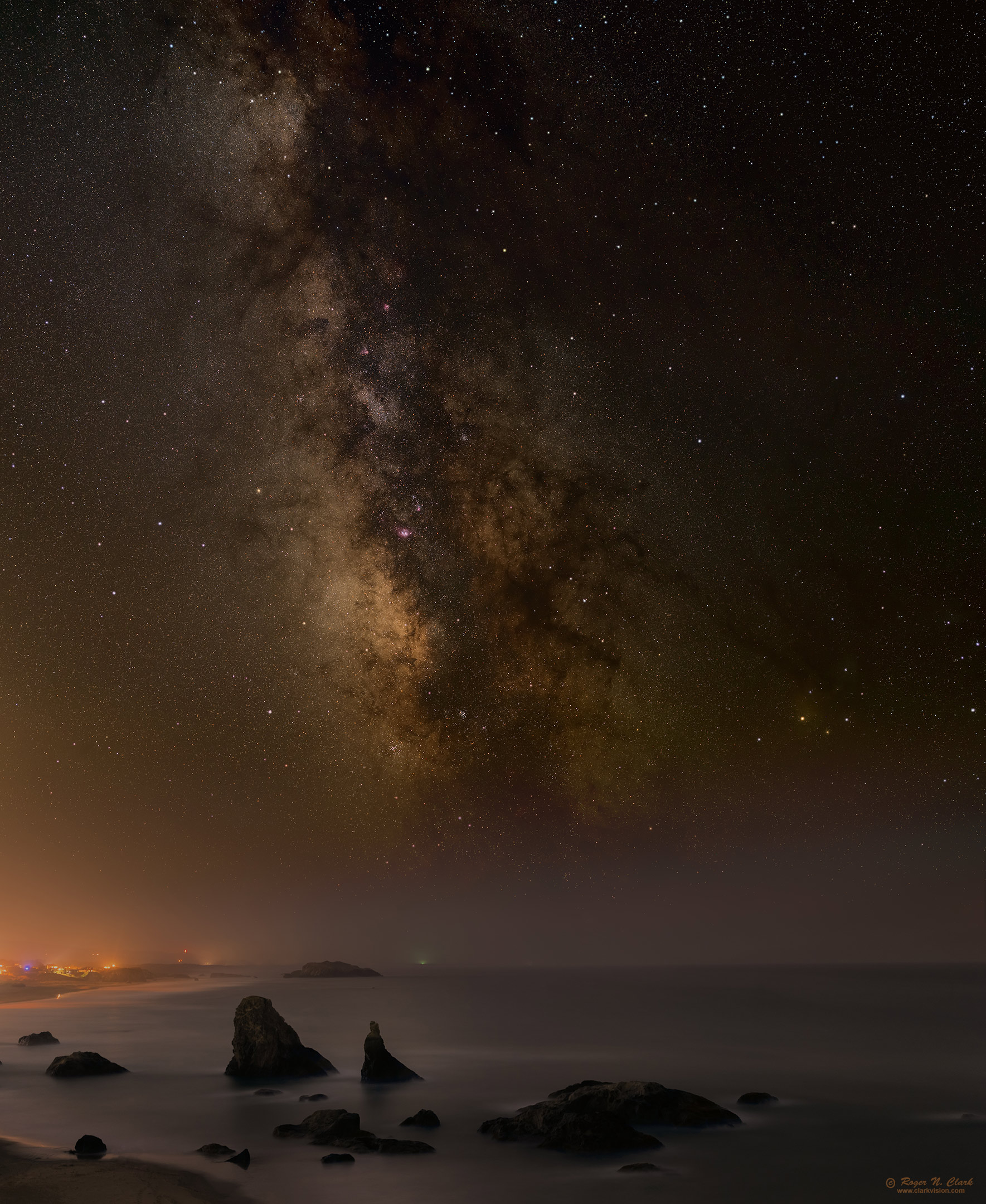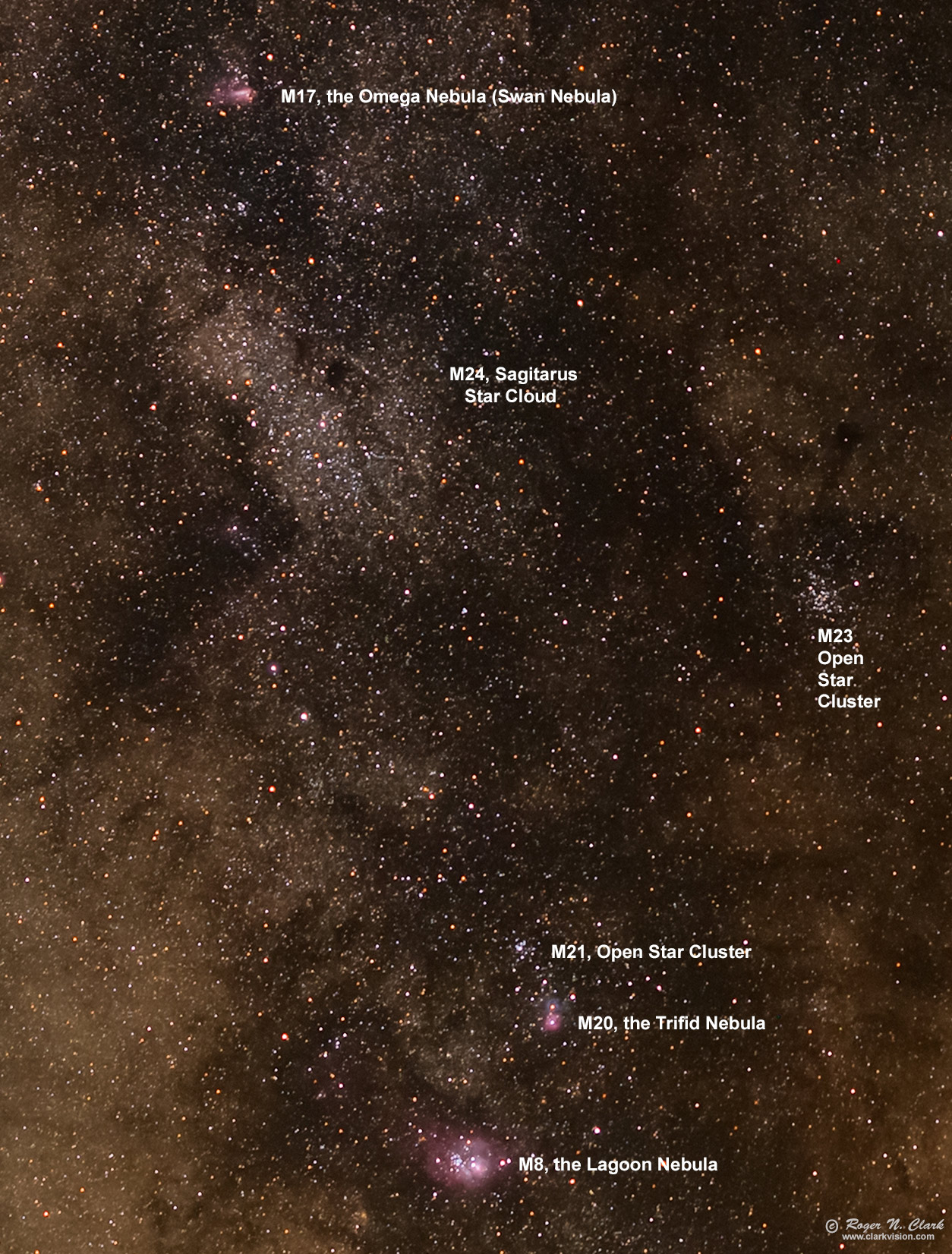| Home | Galleries | Articles | Reviews | Best Gear | New | About | Contact | Gallery Index | Previous |
Next |

| Home | Galleries | Articles | Reviews | Best Gear | New | About | Contact | Gallery Index | Previous |
Next |

Bandon, Oregon, is a small town on the Pacific Ocean with an incredible coastline. The many sea stacks make for unique views in all kinds of weather and times of day and night. The core of the Milky Way above the sea stacks made for a stunning view.
Above the horizon behind the sea stacks were clouds and fog, some lit by lights from fishing boats far in the distance, and with red airglow low on the horizon mixing with the lights and scattering through the fog made for some unusual colors. Airglow is emission from molecules high in the Earth's atmosphere, typically from glowing oxygen emitting green and red at different altitudes above 90 km.
Can you pick out the "Dark Horse" in the Milky Way?
Technical. This image is a 3-frame mosaic. Canon EOS R5 45 megapixel Mirrorless Digital Camera, Sigma Art 40mm f/1.4 DG HSM lens, at f/1.4, ISO 1600. Land (bottom mosaic position): fixed tripod, five 30-second exposures stacked. Sky 1 (middle mosaic position): 8 exposures 16 seconds each, tracked and stacked. Sky 2 (top mosaic position): 10 exposures 16 seconds each, tracked and stacked. Total exposure time: 7.3 minutes. These days, many short exposures are needed and stacked with sigma-clipped rejection of changing components in the scene to reject the many satellites now in our night skies. Exposure of the stars were tracked using an iOptron SkyTracker. The full resolution image is 7668 pixels wide by 9361 pixels high (72 megapixels) and this is 1769 pixels wide by 2160 pixel high image (23% of full scale).
No dark frame subtraction, and no flat fields were used because they were not needed. A flat field is in the lens profile in the raw converter (Photoshop), and bias is a single value for all pixels and in the raw file EXIF data. The Canon R5 has the very low pattern noise, and on-sensor dark current suppression, so there is no need to do dark frames. Modern raw converters correct for hot pixels and, with lens profiles, correct for light fall-off, so there is no need for flat field corrections. Processing was done with 16-bits/channel. This makes astrophotography post processing simple.
A full pixel crop is shown below with labels.

This is a natural color image. How do we know the colors are reasonable? The star colors can be checked against stellar photometry. Red stars have B-V > 2, orange stars have B-V of 1 to about 2. The blue-white stars have B-V in the range of 0 to -0.5. The colors closely follow the color sequence in Table 1 at Color of Stars. Solar-type stars have a B-V of 0.63 and appear close to white (daylight white balance). Less than 1% of stars in the Milky Way are blue. Interstellar dust is brownish in color, not the typical fake blue we see in many Milky Way photos we see these days on the internet. For more on natural color in the night sky see Parts 2a, 2b, 2c and 2d on Color of the Night Sky and proper post processing to show those colors.
To learn how to obtain stunning images like this, please visit my Extensive Articles on Photography .
Keywords to this image = nightscapes landscape-1 mosaic night low-light digital_astro large_format oregon canon_r5 oceans NEW
Image ID: oregon-coast-rnclark-8-21-2025-4C3A3773-97-av5+8+10-g-2160vs.jpg
| Home | Galleries | Articles | Reviews | Best Gear | Science | New | About | Contact |
Last updated November 08, 2025